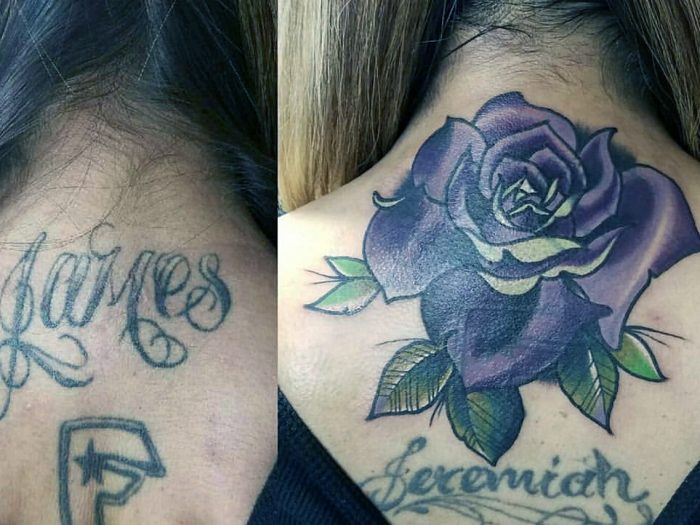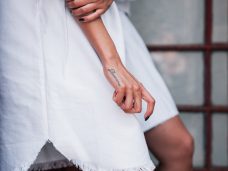With the increasing popularity of tattoos, it’s no wonder that the tattoo cover up is becoming more common. The thing is there are good and bad tattoo cover ups just like there are good and bad tattoos! A good cover up works so well you would never know that there was anything else ever there, while a bad cover up basically looks like one tattoo on top of another.
Which Tattoos Can’t Be Covered?
Cover ups are tattoos like any other, but they require certain skills that normal tattooing doesn’t. Tattoos are scars themselves, and when you have to tattoo over a scar you risk the skin getting further damaged. While this isn’t normally an issue if it’s done too many times the skin can become thick and textured. Older or poorly done tattoos can also be raised which is impossible to get rid of. So how can you make sure that your cover up isn’t a disaster?
How can you make sure that your tattoo cover up isn’t a disaster?
While it would be nice never to have to need it, cover ups happen. Even to tattoo artists!
The golden rule of the cover up is that it usually has to be 2/3 bigger. Tattoo ink is transparent so you can’t just go ahead and shove skin tone over the top and expect it to go away. With enough applications, you might fade it out as the ink blends but it won’t disappear. This is why you can’t simply put another name on top of a name without seeing the original underneath and why you’ll be able to see the lines of the original tattoo in a bad cover up.
The secret to a good cover up is that you can often still see the original lines, they’ve just been reused.
Distracting the Eye with Color!
What makes a great cover up is distracting the eye. Our eyes are drawn to bright colors and light areas. Cover ups are inevitably dark. A good cover up uses that dark spot in another way so it doesn’t seem misplaced – the shadow under a leaf, the inside of a flower, the underside of a bird’s wing etc. These are all areas you expect to be dark. Your eye automatically dismisses it and focuses on lighter areas – the bird’s head, the flower above the leaf etc. It’s a case of still being able to see the old tattoo but not looking at it anymore.
Stick to Non-Uniform Imagery
Another way to create a successful tattoo cover up is to distract the eye again. Leaves, flowers, fish, birds and most nature images have one thing in common – they’re not expected to be uniform. If your flower has one extra leaf or two more petals than the ideal number it’s doubtful you’re going to notice. Maybe the fish has extra scales or the bird has extra feathers. Your brain is still going to focus on the lighter spots and the image as a whole. If someone is counting the number of feathers on your bird then they have much too much time on their hands. By creating a pattern from the same shape and manipulating it to look like something else your brain automatically sees “something else”.
There are very few tattoos that simply can’t be covered, it’s a question of finding what works for them. Solid black very rarely works as a good cover up because it’s so obvious. Very few people choose to get big black chunks tattooed on them initially.
Just because you’ve got to cover up a mistake it doesn’t mean you can’t love your new tattoo. Get an artist that specializes in tattoo cover ups or at the very least make sure you can’t see the old tattoo under it!



